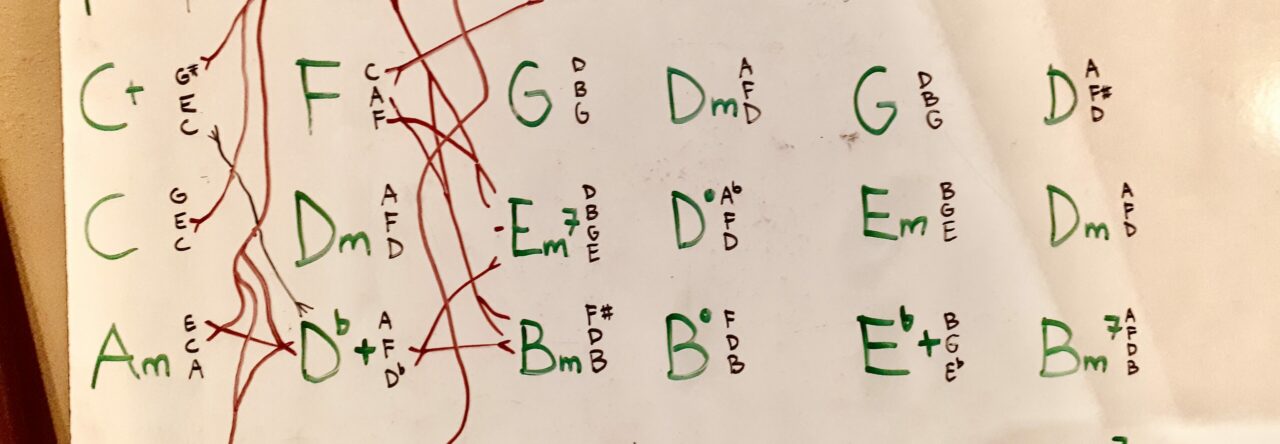Instructional videos, incorporating other chords where the I, IV, and V are expected, and peer feedback.
Age Range: 14 (Grade 9) and up.
Learning Activity Number: 3.
Learning Objectives: Students will be become familiar with the ii, iii, and vi chords and gain a theoretical and a felt understanding of how they “work” in songs. Students will be able to smoothly substitute these chords for others in existing chord progressions.
Universal Design for Learning Principles: Preparatory instruction is audio-visual, with captions, different playback speeds, and infinite repetition available to all learners. It explains specialized terms.
Resources/Materials: Students will need the following:
- internet access to view the study materials on YouTube, make their online submissions, and review and comment on peer submissions,
- access to their chordal instrument and some privacy for figuring out and playing songs,
- basic video recording and processing capabilities to share the results of their work,
- to have formed a small group with classmates, and
- to have accessed the section of the course discussion forum accessible only to groupmates and the instructor.
Learning Activity Outline
Introduction:
Instructional Content:
Activity: View and, as needed for understanding, review (at your own preferred speed, and with subtitles if desired) the above 4 instructional videos. Then take the melody to ABCD / Twinkle Twinkle Little Star / Baa Baa Black Sheep and come up with a more interesting chord progression to play under it. Use the concept of shared notes introduced in the instructional videos to find chords that will still work with the melody. The ii, iii, and vi chords must be used (along with the I, IV, and V), but the vii and V7 are optional. Make a video of you playing your version of the song and share it with the members of your small group and me (in the designated area of the class discussion forum). Then view and comment (in the same forum) on each of your groupmates’ versions.
Assessment: Students will be assessed on both how well the notes of the song’s melody match up with the notes of their chosen chords, and the quality of their participation in their group’s discussion.

Leave a Reply